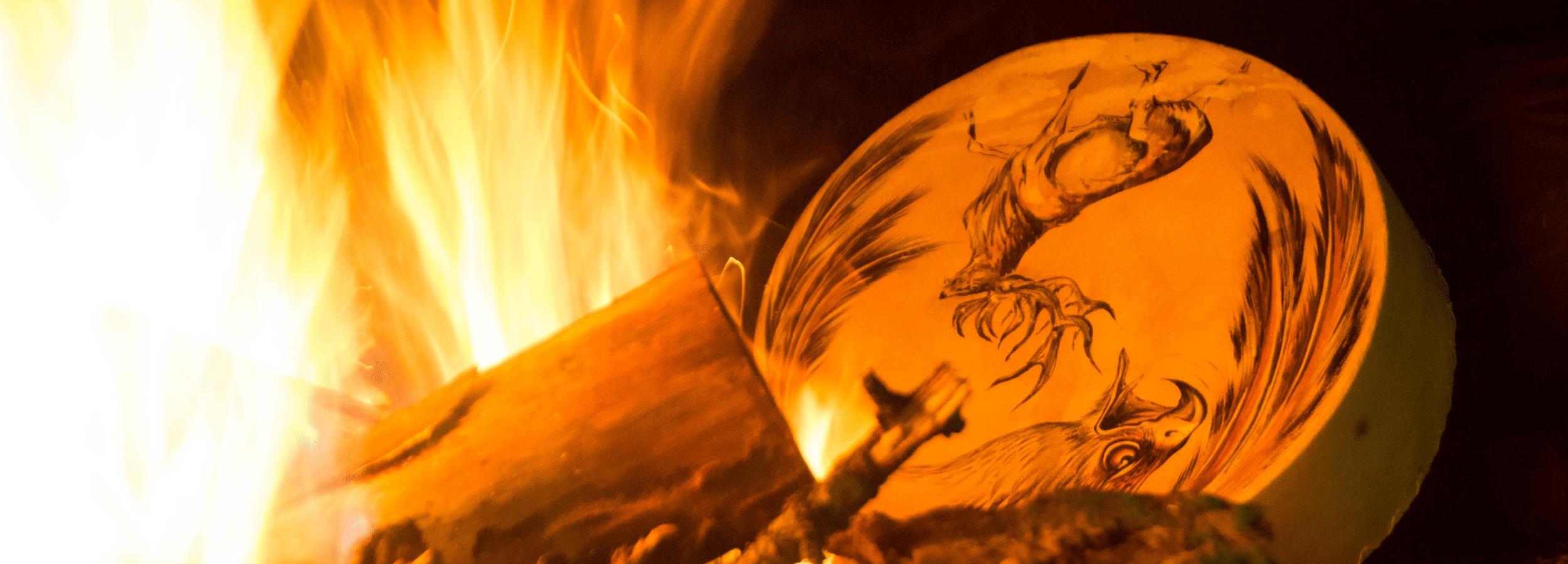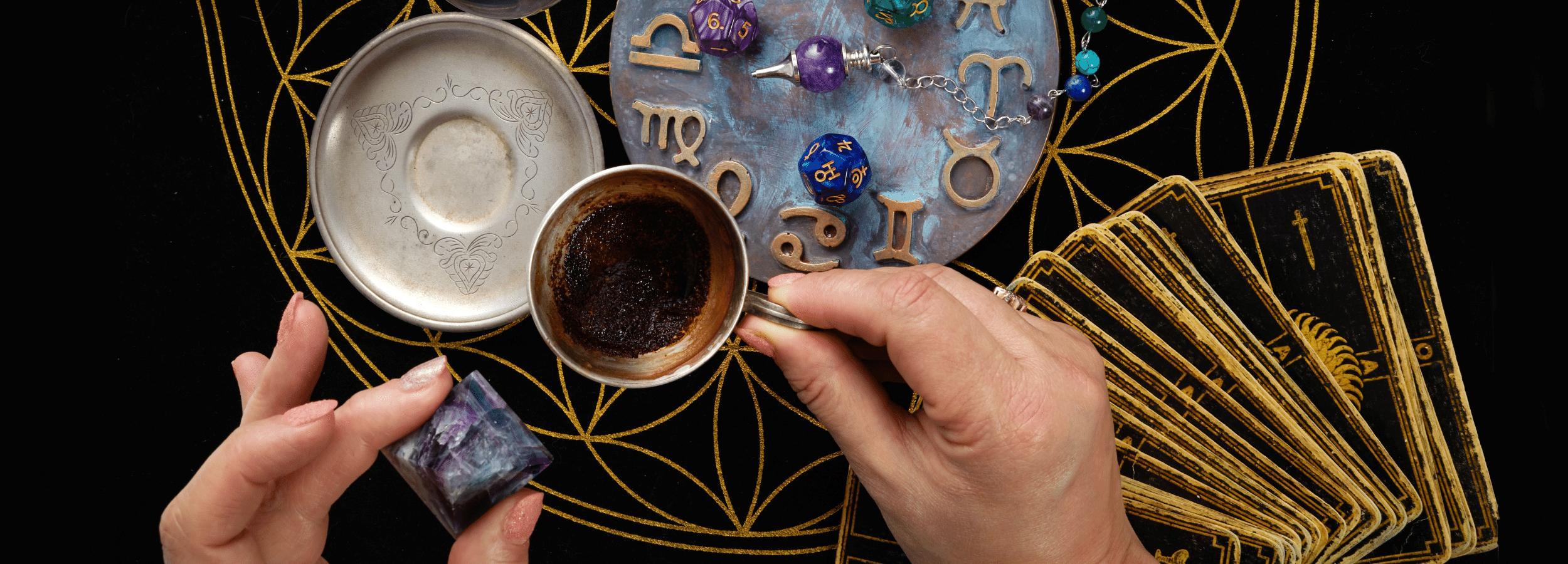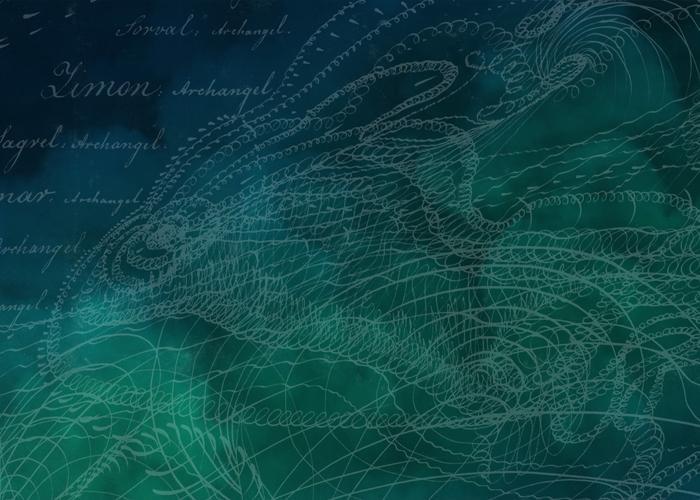Scrying rose to popular fame thanks to none other than Disney. The Queen in Snow White's famous line, 'Magic mirror on the wall...' is, for many, our first introduction to the age-old divination practice of scrying. Yet scrying can reveal so much more than 'the fairest of them all'. It has long been used as a lens into past, present and future.
The first recorded examples of scrying appear in China in around 3000 BCE, in Egypt in 2500 BCE, and in Greece in 2000 BCE. Nevertheless, it was the infamous French prophet, Michel de Nostredame, more commonly known as Nostradamus (1503-1566), who first put scrying on the map.
Nostradamus and scrying
Nostradamus used a scrying method familiar to ancient Greece; a scrying bowl filled with water. Erika Cheetham describes Nostradamus' technique of placing a brass bowl of water upon a tripod in her book, The Prophecies of Nostradamus (1973). He would gaze upon this water until he perceived 'a slight flame out of the emptiness'. It is through this perceived illumination that Nostradamus gained insight for his predictions about momentous future events. He recorded these predictions in a book of poetic verses, Les Prophéties, in 1955. Scholars are still analysing these quatrains today. From them, they have deciphered events such as the rise of Hitler and the assassination of John F Kennedy.

How does scrying work?
Scrying is not just for predicting major global events à la Nostradamus. It can help us on a much smaller scale. We can use scrying to gain personal insights about our life circumstances, or to find an object that we have misplaced. We can scry for clarity on relationships, or future outcomes of different choices. We can also use scrying to help us simply relax.
Scrying requires two ingredients: A scrying tool and a light trance-like state. There are innumerable objects that can be used as a scrying tool, but the following are most common:
- Crystal ball
- Scrying bowl
- Obsidian mirror
- Tea leaves
- Coffee grounds
- A lake or pond
- A candle flame
- Smoke
- A log fire
The light trance can be achieved through a meditative awareness of the breath, the repetition of a mantra, or any technique that stills the mind and relaxes the body.
When we begin to scry, we send a message to our unconscious mind that we are seeking information that is beyond the reach of our senses and conscious awareness. The mind projects symbols and images onto our scrying tool to convey the information to our conscious awareness. These symbols and images are then translated by the scryer into meaning – whether that be for the sitter, or in answer to an enquiry made by the scryer. This translation of symbols and images is an essential part of the scrying process.
Who can learn how to scry?
Do you have a vivid imagination? As a child, did you look up at the clouds and see shapes and pictures? Do you see images in the flames when gazing at a log fire? Do you find yourself drifting off into your own world when you are looking at a lake of water?
If your answer is yes, then you could have a latent ability to scry. Celts, Romanies and Native Americans have long been known to possess the gift of second sight. If you have any of these in your ancestry, it is likely you also have an aptitude for scrying.
The most important thing to remember when learning how to scry is that it cannot be rushed. Even if it comes easily to you, becoming a scrying professional does not happen overnight. Learning how to scry takes plenty of practice, patience and perseverance. You also need to develop trust in your senses and be receptive to what they are telling you.

How to scry: A simple scrying technique
In ancient times, scrying was closely connected to the magic of the moon. That is why we generally scry after 10pm. This is because the evenings lend themselves to peace and quiet, making it the perfect time to relax. So choose your evening, and get settled in for our instructions on how to scry:
- Choose a scrying tool, be it a mirror, crystal ball, scrying bowl or pool of water – whatever you feel inspired to use. Scrying can also be done with a log fire or candle flame, smoke or tea leaves.
- Find a quiet space, light a candle, burn some incense and sit in an upright chair.
- Close your eyes and focus on your breathing. Let go of the day and empty your mind. Find that stillness within. With practice you will find yourself entering a light trance state.
- All your senses are now fully charged and ready to focus on your scrying tool.
- Focus your gaze softly upon your scrying tool. Remain open to whatever flashes of inspiration or moments of clarity arise.
- What information do you receive? You may discover where to find that item you lost, or a solution to a problem you have been mulling over. Trust your senses and what they are telling you. It is as easy as that.
- Practice makes perfect! Remember, scrying takes time to develop as a gift, so keep going!

Scrying on the go
Even if you feel you do not have time to stop and be still, you can still scry. A perfect time for scrying on the go is when you're doing the washing up, when you can shut out everything around you and focus on the washing up and the bubbles. Or perhaps you are cooking a stew or pot of soup, and slowly stirring it. Your mind is occupied by the actions of just washing up or stirring. Without realising, you may take yourself into a slight trance. Most people dismiss these moments as mere daydreams, but they are, in fact, prime scrying moments.
Join our newsletter to receive updates on our upcoming scrying and psychometry classes, as well as talks, exhibitions and more.





